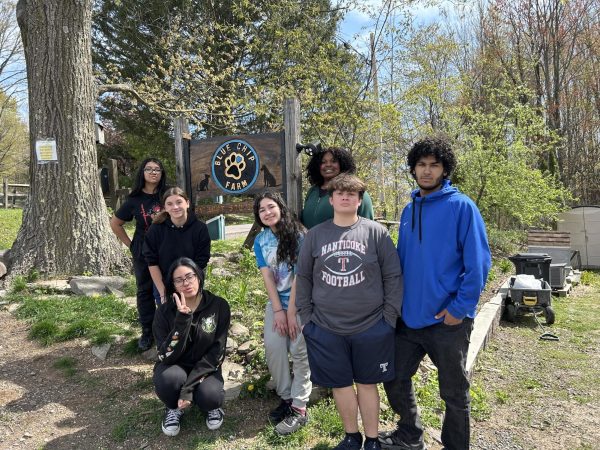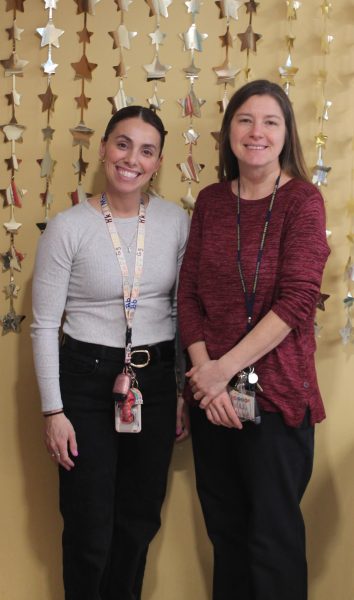Kennedy Early Childhood Center and GNA Elementary Center return to hybrid learning
“Working remotely has definitely taught us to appreciate having the students in front of us in the classroom. Not only can we be more hands-on with them, but we can ensure that they are safe and are receiving proper nutrition while they are with us,” Mrs. Bartle, the K-5 principal explains.
The Kennedy Early Childhood Center and GNA Elementary Center teachers and students are packing their backpacks to return to hybrid learning. This February, the students began attending in-person classes twice a week and virtual classes three times a week. On Wednesday’s, the building is closed and entirely sanitized.
The GNA Insider spoke with Mrs. Bartle, the principal of the kindergarten through 5th-grade.

The Kennedy and Elementary schools are taking safety to the highest of standards. They are following the same safety precautions they implemented at the beginning of the 2020-2021 school year. This included required mask-wearing, keeping a distance of six feet or more, and frequent hand washing.
On the bus ride to school, students are socially distanced between the rows of seats. Students living within the same household are scheduled on the same day for in-person classes and therefore ride together, whether that be on the bus or other transportation.
Upon arrival at the school, both staff personnel and student are required to have their temperatures taken before entering the building. A normal temperature grants admittance inside and only students and staff are permitted to enter the buildings. Students must wear their masks at all times. The students are allowed to remove their masks during the lunch period and for appropriate mask breaks. They eat their lunches in their classrooms and are distanced 6 feet apart to ensure social distancing.

Throughout the school day, the supportive custodian, Mr. Karl, has been ensuring proper sanitation in all rooms and their surfaces. “If at any time a child becomes ill, his or her classmates are removed from the classroom so it can be sanitized again,” Mrs. Bartle adds.
To track mitigation, each teacher is supplied with hand sanitizer, cleaning supplies, and extra masks. If an individual is exposed to the virus, the school is able to conduct contact tracing between staff members or students.
“Nothing can ever replace in-person instruction, especially for students in the primary grades. So much of their development relies not only upon academics, but they need to develop their socialization skills, as well,” Mrs. Bartle explained.

The school administration has made sure to provide adequate ventilation in the classrooms and frequent outdoor activities such as recess. After the students are done with the playground equipment, the maintenance department goes in and sanitizes the area. Additionally, to limit transmissions, the water fountains found in the hallways are closed and water coolers with single-use paper cups are offered instead.
It was unpredictable how the younger students would react and handle following such guidelines. “At first, we thought this was going to be a difficult task, but the students clearly surprised us,” Bartle stated. With practice, the students ranging from ages 4 to 8 were able to learn what each sign meant and follow the “socially distanced” stickers on the floors. “They were happy to comply because they love being in the classroom with their teachers and their friends.”
The biggest struggle when it came to reopening was following the rules, the recommended CDC guidelines, and district mitigation efforts. It is a privilege to reopen the schools and it requires compliance of both student and faculty. The Greater Nanticoke Area School District closed their buildings this past October based on guidance from the Pennsylvania Department of Education and the Pennsylvania Department of Health.

At the time of the closure in late October, the positivity rate of COVID-19 transmission was above 10%. According to the Pennsylvania Department of Health, if the positivity rate is above 10% and the incidence rate is above 100 for every 10,000 county residents, then the district must switch to virtual.
The Kennedy and Elementary buildings were the first to reopen as suggested by the CDC and the PA Department of Health. There has been new research regarding the transmission of COVID-19 and it has been shown that the transmission levels are lower in Elementary-aged students. However, COVID-19 is shown to spread more readily in the older grades which is why the Educational Center and High School have not yet reopened.
In order for them to follow suit in reopening, the PA Department of Health and PA Department of Education must continue their guidance in the secondary schools and the county must be below a 10% positivity rate and below a 100 incidence rate. Regarding the variant strains of the virus, the district will adapt its teaching model to follow the recommendations issued by the Department of Health and Department of Education.

My name is Sophia Tattersall, and I am a senior at Greater Nanticoke Highschool. This is my first year writing for The GNA Insider. I have lived in a dozen...











